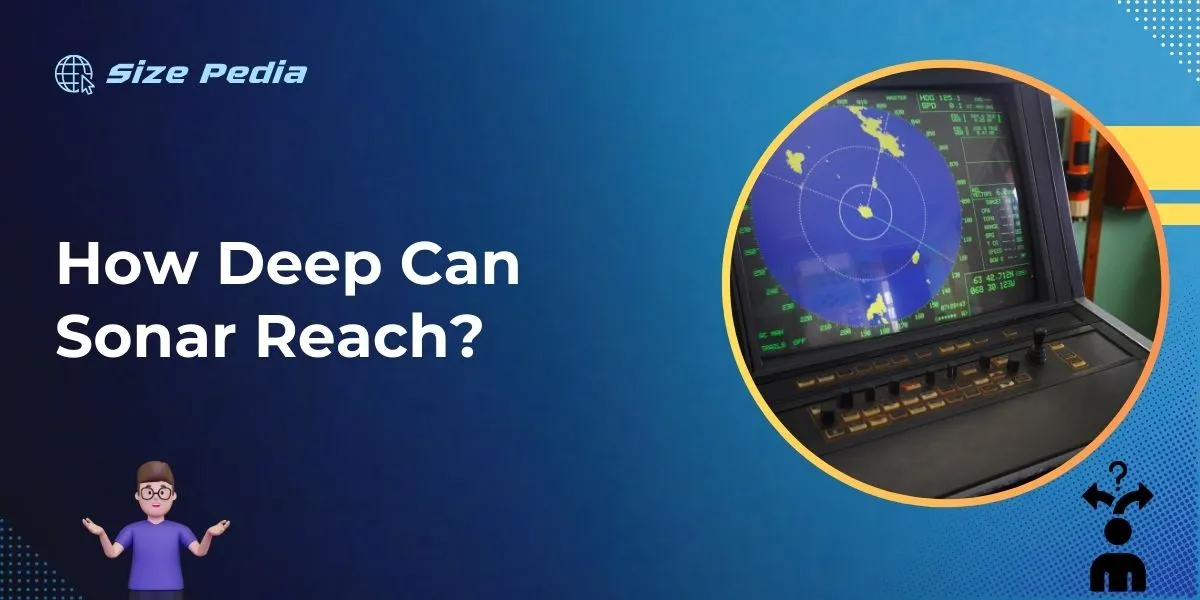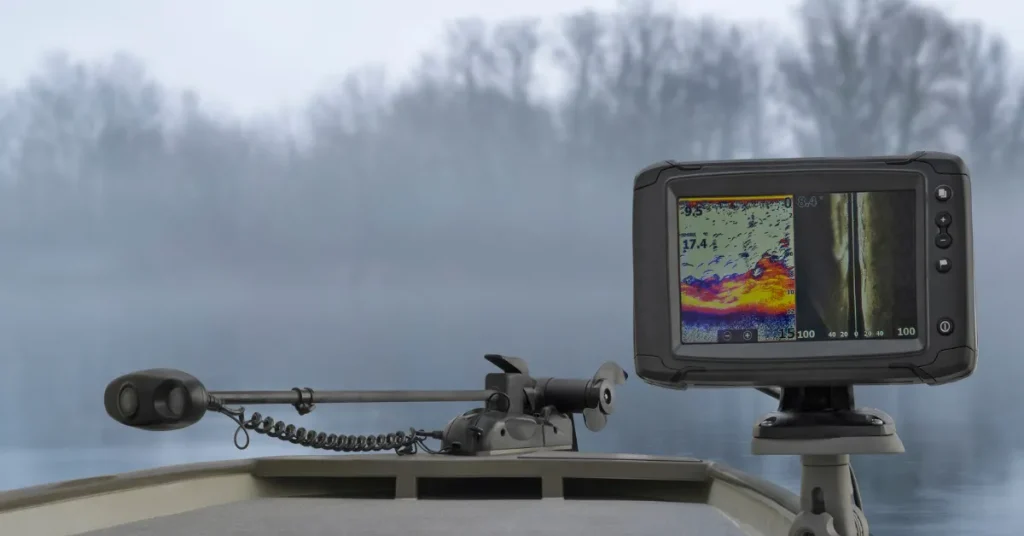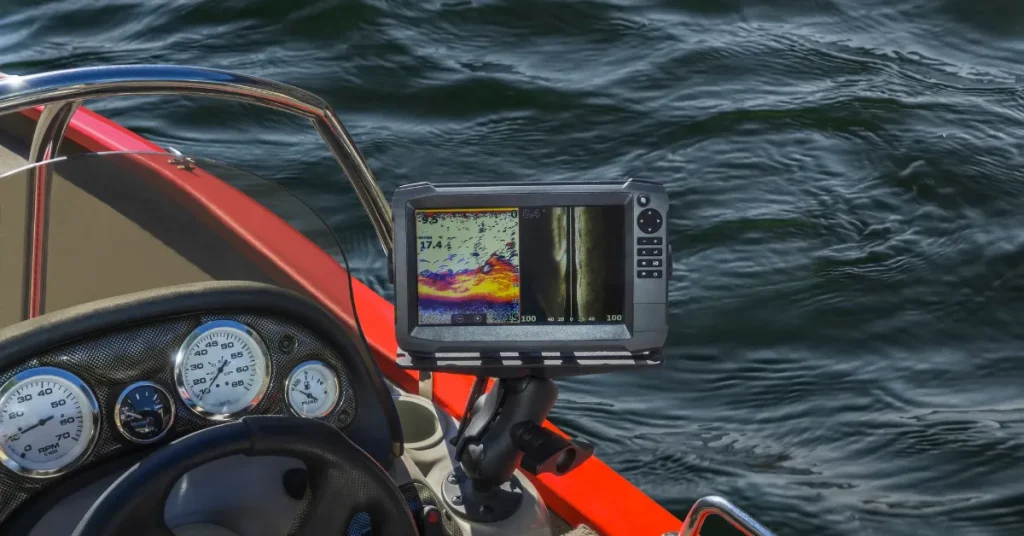Sonar systems can reach depths of up to 6,000 meters. This capability varies depending on the technology and water conditions.
Sonar, an acronym for Sound Navigation and Ranging, represents a sophisticated technological method used to detect objects underwater.
By emitting sound waves and analyzing their echoes, sonar equipment maps out the seafloor’s topography, locates submerged objects, and gauges water depths.
Its applications are diverse, ranging from navigation aids for ships to fish location for commercial fishing operations.
Advanced sonar systems employed in scientific research can penetrate the deep ocean, revealing the mysteries that lie in the world’s most remote and least explored places.
With constant technological advancements, sonar remains an indispensable tool for marine studies, undersea exploration, and naval operations, ensuring safe and informed passage across the planet’s vast and varied aquatic environments.

The Essence Of Sonar Technology
The essence of Sonar Technology lies in its ability to explore and understand what our eyes cannot see beneath the ocean’s surface. Sonar, or Sound Navigation and Ranging, is a technique that uses sound waves to detect objects and map the seafloor.
This technology is crucial for navigation, fishing, research, and even in search and rescue operations.
The Basics Of Sonar Systems
Sonar systems emit sound pulses into the water and wait for the echo. By measuring the time it takes for the sound to return, the distance to an object or the seafloor can be calculated. Two main types of sonar, active and passive, serve different purposes.
- Active Sonar: Sends out a sound wave and listens for echoes.
- Passive Sonar: Listens for sounds without sending out its own signal.
Both systems provide critical data for seafarers and scientists alike.
Advancements In Sonar Technology
Sonar technology has advanced significantly over the years, allowing for deeper and more precise imaging. Modern sonar systems can reach depths that were once thought unattainable, mapping ocean landscapes with remarkable clarity.
| Year | Advancement |
| 1970s | Multibeam echosounders increase mapping efficiency. |
| 1990s | Side-scan sonar improves image resolution. |
| 2000s | Adaptive sonar systems enhance performance in different environments. |
With each leap in technology, deeper reaches of our oceans are unveiled, showcasing a world once veiled in mystery.
Delving Into The Depths
Welcome to the intriguing world beneath the waves. Delving into the Depths is an exploration into the mysteries of the deep blue, where sunlight fades and the ocean’s secrets lie hidden in darkness.
Understanding how deep sonar can reach is essential for unraveling these mysteries. Let’s dive into the science of sonar and how it helps us to explore uncharted territories beneath the ocean’s surface.
Sonar’s Role In Ocean Exploration
Sonar, which stands for Sound Navigation And Ranging, is a tool that sends sound waves into water. It then listens for echoes. These echoes bounce off objects and return to the sonar device.
- Mapping the seabed: Sonar creates pictures from sound waves to show us the ocean floor’s shape.
- Locating objects: Whether it’s shipwrecks or schools of fish, sonar helps find them.
- Depth measurement: It measures how deep water is, so boats and submarines can navigate safely.
Limiting Factors In Sonar Depth Capabilities
Several factors influence how deep sonar can reach. Let’s explore these limitations:
| Factor | Impact on Sonar Depth |
| Water Temperature | Colder water can carry sound waves further. |
| Salt Content | High salt levels can affect sound speed and clarity. |
| Ocean Depth | Deeper water may absorb more sound, limiting sonar. |
| Seafloor Composition | Soft sediments absorb sound; rocky areas reflect it. |
| Equipment Frequency | Higher frequency sonar has less reach but more detail. |
A sonar’s ability to reach great depths is not limitless. These factors can hinder the sound waves. High frequencies provide detailed images but cannot penetrate deep waters, while low frequencies cover great depths but with less detail.
The Science Behind The Sound

The Science Behind the Sound is a fascinating topic that delves into the principles of how sonar technology penetrates the depths of oceans and lakes.
By emitting sound waves, sonar systems can map underwater features and locate objects. In essence, this technology relies on the physics of sound transmission and reflection in water.
How Sound Waves Traverse Water
Understanding how sonar works starts with the basics of sound wave propagation. As sound travels through water, it encounters minimal resistance, allowing it to reach impressive depths. Here’s a breakdown of this phenomenon:
- Speed: In water, sound moves faster than in air, averaging around 1,500 meters per second.
- Frequency: The frequency of sonar waves determines how far they can travel. Lower frequencies penetrate deeper.
- Temperature and Pressure: Both factors affect sound speed. As depth increases, higher pressure can slightly speed up sound waves.
Interpreting Sonar Feedback
Once sound waves hit a submerged object or the seabed, they reflect back to the sonar equipment. Sonar devices then interpret this feedback:
- Echo Strength: Stronger echoes suggest that the object is larger or has a denser composition.
- Time Lag: The interval between sending the sound wave and receiving the echo helps calculate distances.
- Waveform Analysis: Changes in the returned wave’s shape can provide additional details about the object.
Sonar technology has evolved to provide detailed undersea maps and locate objects with precision. Its ability to reach incredible depths is a testament to the advanced application of acoustic science.
The Achievements Of Deep-sea Sonar
Deep-sea sonar has revolutionized our understanding of the ocean’s depths. This technology uses sound waves to detect objects and map the seafloor.
With sonar, we can explore where light cannot reach, unraveling mysteries of the deep.
Remarkable Discoveries Enabled By Sonar
- Shipwrecks: Sonar has located historic shipwrecks, uncovering lost chapters of human history.
- Underwater Volcanoes: It has helped identify new underwater volcanoes, expanding our geologic knowledge.
- Trenches: The deepest parts of our oceans, like the Mariana Trench, have been mapped thanks to sonar.
- Marine Habitats: Unique ecosystems have been discovered, providing insight into biodiversity.
Pushing The Boundaries: Sonar’s Deepest Reaches
Sonar technology can reach remarkable depths. The deep-sea sonar capabilities include:
| Technology | Maximum Depth |
| Multibeam Echosounders | Up to 11,000 meters |
| Side-scan Sonars | Varying, some exceed 6,000 meters |
| Synthetic Aperture Sonar | Advanced systems can reach several thousand meters |
These numbers are just the beginning. Ongoing advancements in technology promise even deeper exploration in the future.
Challenges And Controversies

Sonar has helped us uncover the ocean’s mysteries. Yet, it has sparked debates. People worry about its effects. Businesses and experts often argue over its use.
Let’s dive into the concerns that surface with deep-sea sonar. We’ll explore its environmental impacts and legal challenges.
Environmental Impacts Of Deep-sea Sonar
Sonar waves can travel far in the ocean. Still, they may harm sea life. For example, whales use sound to communicate. Sonar can confuse them. It can also damage their hearing. Below are key impacts:
- Disruption of communication: Sea creatures can’t talk or find food well.
- Physical harm: Intense sonar can hurt animals’ ears and tissues.
- Behavioral changes: Animals may act differently or move away from their homes.
Scientists are studying how to use sonar without hurting the ocean. They want to keep the sea life safe while exploring the depths.
Navigating Regulatory Hurdles
Sonar use must follow the law. Different places have different rules. Some laws are strong to protect sea life. Others need to be better. Below are common challenges:
- Understanding complex rules can be hard.
- Getting permission to use sonar takes time and work.
- Laws change often, and users must stay updated.
Companies and researchers must know the laws well. They should work with lawyers and experts. This way, they can use sonar right and protect the ocean.
FAQs About How Deep Can Sonar Reach
What Determines Sonar’s Maximum Depth Range?
Several factors impact sonar’s reach, including the frequency of the sonar pulse, the power output, water conditions, and the reflectivity of the seafloor. Lower frequencies penetrate deeper but offer less detail.
How Accurate Is Deep Water Sonar?
Deep water sonar accuracy can vary. High-resolution systems can detect small features, while lower frequencies provide broader but less detailed images. Accuracy depends on system calibration and environmental factors.
Can Sonar Work In The Deepest Oceans?
Yes, sonar is capable of working in the deepest ocean trenches. Specialized deep-sea sonar equipment is designed to withstand extreme pressures and can map the ocean floor at great depths.
Do Water Temperature And Salinity Affect Sonar?
Water temperature and salinity can influence sonar performance. Sound waves travel differently through warm and cold water, as well as through varying salinity levels, affecting sonar’s range and accuracy.
Conclusion
Exploring the depths of our oceans is captivating. Sonar technology has revolutionized underwater discovery. Accurate to several kilometers, it penetrates ocean darkness with precision.
As technology advances, so will our understanding of the deep. Embrace the depth, and treasure its secrets uncovered by sonar’s reach.
Resources:
1. https://oceanexplorer.noaa.gov/technology/sonar/sonar.html
